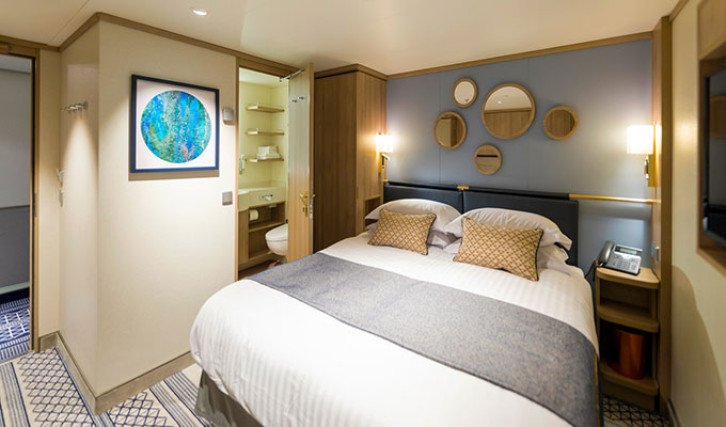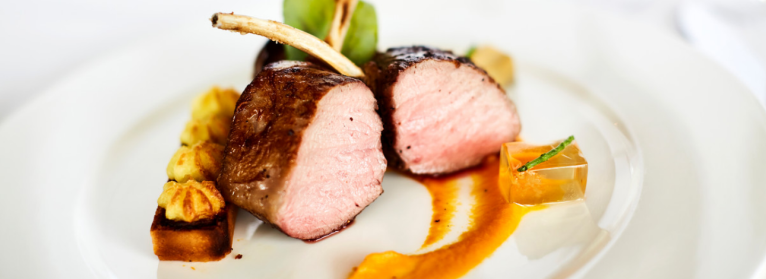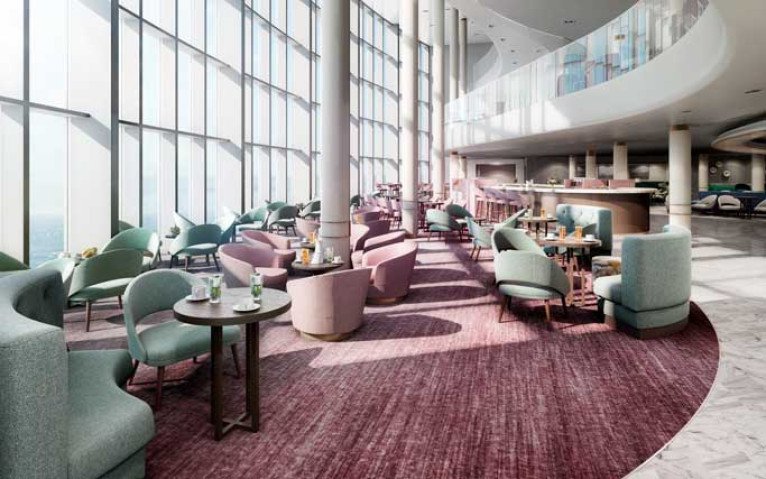(Prices correct as of today’s date, are updated daily, are subject to change and represent genuine availability at time of update).
This cruise only holiday is financially protected by ABTA
Please click here to check the essential travel requirements before booking this cruise.
Want to add a hotel stay or change your flights?
Just call our team of cruise specialists to help build your dream cruise holiday today!
Spread the cost of your holiday! Interest Free Monthly payments are based on a deposit of 10%, and 13 monthly installments in accordance with our balance due date.
Prices based on 2 people sharing. Cruise only price does not include flights. Fly-cruise price may vary by chosen UK airport.
Itinerary
Southampton
Lying near the head of Southampton Water, a peninsula between the estuaries of the Rivers Test and Itchen, Southampton is Britain’s largest cruise port. It has been one of England’s major ports since the Middle Ages, when it exported wool and hides from the hinterland and imported wine fro... Read More
Southampton
At Sea
La Coruña
At Sea
At Sea
Málaga
At Sea
Marseille
Barcelona
At Sea
Cádiz
At Sea
At Sea
Southampton
What's Included with
P&O Cruises
Accommodation
Breakfast, lunch, dinner and snacks in a choice of included dining venues
Entertainment throughout the day and evening
Use of swimming pools, hot tubs, fitness centre and leisure facilities where available
Complimentary shuttle service from ship to port where available
Port taxes
Themed events and discos
Tea and coffee in seleted venues
Porterage of luggage from port to cabin
Youth programmes for 2-17 year olds
Free of charge babysitting from 6 months - 4 years of age. Daily from 6pm to 2am
Explore Arvia
With the promise of happy days and fun-filled nights to come, the P&O Cruises Arvia is a ray of holiday sunshine. Dive deep into the wonders of the Med or soak up the sun in the Caribbean, discovering cultural treasures, postcard-worthy beaches and delicious local treats, plus you will have everything you need onboard the Arviva when sailing from destination to destination. From a fantastic world of food to taking your pick from an abundance of exceptional entertainment - onboard the P&O Cruises Arvia, you’re guaranteed to never be bored!
The Keel and Cow
A P&O Cruises first, The Keel and Cow is an unpretentious gastropub, where food and drink have been crafted into something truly special. Located on deck 8, it offers a quick and convenient breakfast for those going ashore, and lunchtimes bring top-quality, authentic gastropub fare to the fore, with dishes such as a signature beef and stout burger, beer-battered fish and triple-cooked chips, black-pudding, scotch eggs and more.
At night, guests can gather with friends to enjoy hearty dishes or select from a range of steaks from the dry-ageing fridge. With views over the Grand Atrium or out to sea, or even to the chefs at work in te open galley, The Keel and Cow is the perfect place to bring food, friends and family together in a relaxed, informal environment.


The Grand Atrium
The Grand Atrium is the beating heart of Arvia; a lively signature space that encapsulates the spirit of the ship. The architecturally impressive space sits on decks 6, 7 and 8 and boasts a contemporary design that brings in uninterrupted panoramic sea views and natural light.
As one of four primary entertainment spaces on board, the Grand Atrium offers lots to see and do around the clock. By day, it’s a place to meet, dine, relax, be entertained or simply watch the world go by; by night, it’s an immersive destination venue, balancing intimate spaces with larger social areas. The space seamlessly transitions between day and night through lighting and sound.
Thermal Suite
Explore heated loungers, a therapeutic sauna, sensory steam rooms and experiential showers. Other features include a hydrotherapy pool with massaging jets and air recliners.
Night Nursery
Under 2s will love Turtle Tots day sessions, designed especially to meet their needs. In the evenings, our team of dedicated nursery staff offers a night nursery, so you can enjoy all the exciting events and experiences on board. Pre-registration is essential.
Deck 19 - Sky Deck

- Sunbathing Area
- Sports Court
- Golf Nets
Deck 18 - Panorama Deck

- Panorama Pool & Bar
- Jogging Track
- Splash Park
- Whirlpools
- Sunbathing Area
- Beachcombers
- Pool
- Bar
- The Retreat
Deck 17

- Whirlpools
- Sun Deck
- Surfers Outdoor
- Deck Games
- Surfers (The Reef)
- Splashers (The Reef)
- Scubas Outdoor
- Scubas (The Reef)
- Nursery/Night Nursery
- The Reef Reception
- Sun Deck
- Sky Bar
- The Epicurean
- The Ivory Suite
- The Crows Nest
- Balcony Cabins
- Inside Cabins
Deck 16 - Lido Deck

- Infinity Pool
- Infinity Bar
- Horizon Restaurant
- Grab & Go
- The Beach House
- Crystal Bar
- Skydome
- Skydome Pool
- Skydome Pizzeria & Grill
- Laguna Bar & Sundaes
- Balcony Cabins
- Inside Cabins
Deck 15

- Suites
- Balcony Cabins
- Inside Cabins
Deck 14

- Balcony Cabins
- Suites
- Inside Cabins
- Single Balcony Cabins
Deck 12

- Suites
- Balcony Cabins
- Inside Cabins
- Inside Single Cabins
Deck 11

- Suites
- Balcony Cabins
- Inside Cabins
- Single Balcony Cabins
Deck 10

- Suites
- Balcony Cabins
- Inside Cabins
Deck 9

- Suites
- Balcony Cabins
- Inside Cabins
- Single Balcony Cabins
Deck 8 - Promenade Deck

- Whirlpools
- Sunset Bar
- The Club House
- Stage
- The Quays
- The Olive Grove
- Sindhu Bar
- Sindhu
- Outside Dining
- Gelateria
- The Keel & Cow
- Infinity Whirlpools
- Family Sea View Suites
- Conservatory Mini-Suites
- Balcony Cabins
- Inside Cabins
Deck 7 - Parade Deck

- Pearl Restaurant
- The Avenue Shopping
- Shore Excursions
- Loyalty & Cruise Sales
- Photo Gallery
- The Glass House
- Casino
- Brodie's
- Headliners Theatre
Deck 6 - Gala Deck

- Coral Restaurant
- Aqua Restaurant
- Opal Restaurant
- Anderson's
- Ocean Studios
- The 710 Club
- Vistas
- Emerald Bar
- Grand Atrium
- Harbours
- Oasis Spa
- The Limelight Club
- Art Gallery
- Scene
- Headliners Theatre
Deck 5

- Oasis Gym
- Thermal Suite
- Treatment Rooms
- Studio
- Balcony Cabins
- Sea View (Outside) Cabins
- Inside Cabins
- Single Inside Cabins
Deck 4

- Sea View (Outside) Cabins
- Inside Cabins
Deck 3

- Medical Centre
Arvia Cabins & Suites
With plenty of P&O Arvia cabins to choose from, creating your dream holiday has never been easier!
Inside
A practical, modern choice if you are simply looking for a place to lay your head after a day of adventures and enjoying everything the ship has to offer.
Sea View
Sea-view P&O Arvia cabins have beautiful natural light and luxury amenities. Similar to our inside cabins whilst ensuring you’re never too far away from those relaxing sea views.
Balcony
Enjoy the sea breeze in your own private outdoor space when you choose a balcony cabin. They are the perfect option for a slow morning with a continental breakfast or to spend a few peaceful hours sunbathing with a book.
Conservatory Mini Suite
Brand new to the Arvia cruise ship, these cabins let the great outdoors in via an additional lounge area with floor-to-ceiling glass between your main bedroom and balcony. Relax inside or out in complete comfort and with incredible views.
Suite
Experience VIP treatment at sea with your own butler service, spacious accommodation, a luxury bathroom with a whirlpool, room service and breakfast each day in an exclusive restaurant.

Inside Cabins

Sea View Cabins

Balcony Cabins













-large_thumb.jpg)









